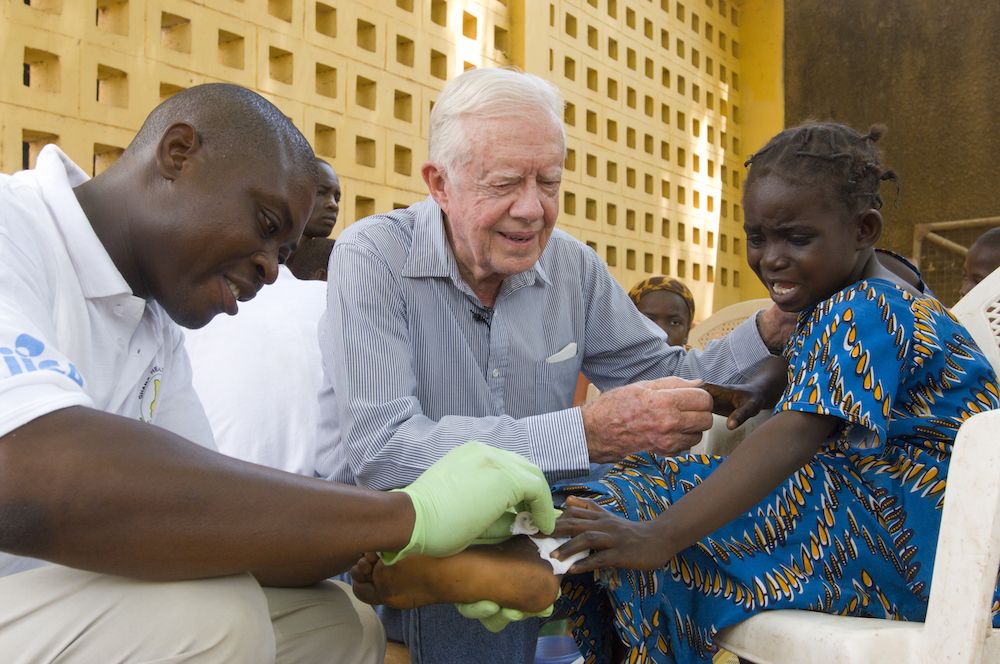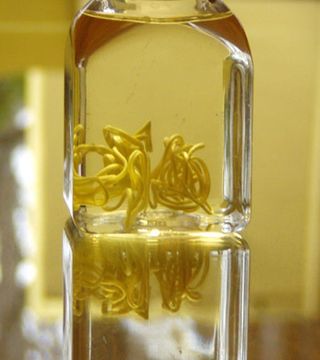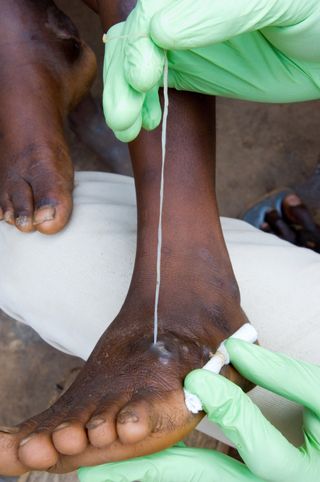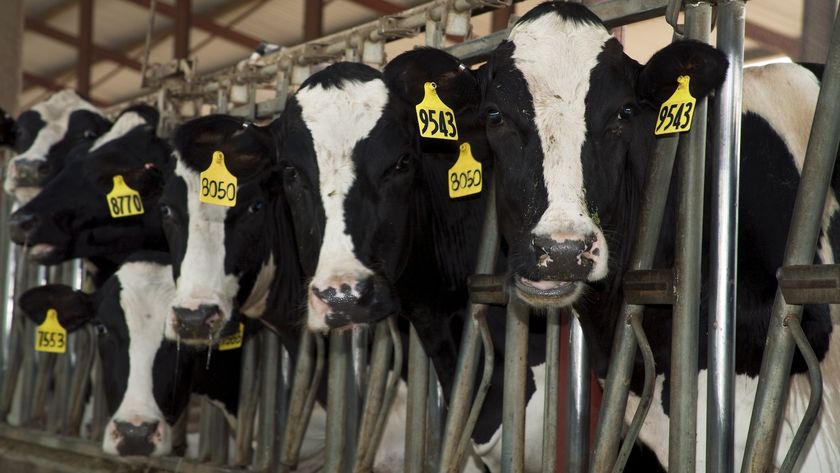Jimmy Carter: I Want the 'Last Guinea Worm to Die Before I Do'

When former U.S. President Jimmy Carter announced earlier this month that he had melanoma, he also took the opportunity to slam another health issue: the Guinea worm.
At the Aug. 20 news conference, Carter said that, even as he receives treatment for his cancer, he still wants to hear updates on the world's last few remaining cases of Guinea worm, a parasite that spreads through contaminated water and causes a devastating disease, leaving people incapacitated for months.
"I would like the last Guinea worm to die before I do," said Carter, who will turn 91 on Oct. 1. [The 10 Most Diabolical and Disgusting Parasites]
His wish may become a reality. When the former president's nonpartisan charity organization The Carter Center began its campaign against Guinea worm in 1986, an estimated 3.5 million people in 21 countries in Africa and Asia had Guinea worm disease (dracunculiasis), according to the center. Now, there are just 12 known cases of the disease in four African countries, said Dr. Donald Hopkins, vice president of health programs at the center.
Burrowing parasite

Guinea worm has infected people for thousands of years. The Bible's Old Testament contains the earliest known reference to the parasite, which dates to 1450 B.C., and calls the worm a "fiery serpent," according to the center.
The worm reproduces relentlessly. "The female worm has a long uterus, jam-packed with hundreds of thousands of immature larvae, and she ejects those larvae into the water," Hopkins told Live Science. The larvae are microscopic — they can't be seen with the naked eye.
Sign up for the Live Science daily newsletter now
Get the world’s most fascinating discoveries delivered straight to your inbox.
But tiny, shrimplike creatures called copepods eat the larvae, which then develop into larger parasites over the next two to three weeks. People get infected when they drink water contaminated with these parasite-containing organisms.
Once inside a human host, the Guinea worm takes about a year to reach adulthood. Then, when it's about 3 feet (1 meter) long, the worm burrows out of the infected person's body, creating an extremely painful wound on the skin, typically the leg, Hopkins said.
"Just before the worm begins to emerge, it secretes something that causes a burning blister on the skin," Hopkins said. Putting that burning blister into cool water brings relief, "which is, of course, what the worm wants," he said. When that happens, "the blister ruptures, and hundreds of thousands of larvae are ejected."
Treatment and prevention
The best way to treat Guinea worm — named by Europeans who encountered it in Guinea — involves patience. People are instructed to slowly wrap the emerging worm around a stick, encouraging the worm to leave the host's body, but this can take days or weeks. Often, the wound gets dirty or infected, and it can prevent people from attending school, caring for their family or going to work, Hopkins said.
If the worm breaks as it's leaving the person's body, the rest of the worm retracts into the person, and spills larvae into the tissues. This can cause a subsequent infection and even be life threatening, Hopkins said.
But people who successfully rid themselves of worms are no longer considered active cases. Right now, there are seven people with active cases in Chad, one in Ethiopia, one in Mali and three in South Sudan, he said.

The best path to eradicating the disease is to prevent it; Carter uses his status and leadership skills to inform and recruit world leaders and organizations to join the cause, the center said.
For instance, the center reported that corporations donated more than $4 million worth of a nontoxic larvicide that kills the copepods carrying Guinea worm larvae as well as mosquito larvae; 2 million square yards (1.7 million square meters) of nylon, which can be used as water filters; and 9 million straws with built-in filters, one for every man, woman and child at risk of the disease in Sudan, the center reported.
While all of these technologies are important, providing at-risk people with clean water is crucial, Hopkins said. For instance, wells and underground pipes can provide clean water, but they're expensive to build. Moreover, local politicians often want plumbing in their own villages before they're built in the poorest areas, he said.
Education is also crucial, Hopkins added. "Part of the difficulty controlling it [the Guinea worm] is that it's hard for people to connect something that they did a year before with what's happening to them now," he said. "You have to help them to understand that this parasite is coming from their drinking water."
One missed case can easily give rise to 80 or more infections the following year, he said. But the worm lives only for about a year, and countries can be declared free of Guinea worm if transmission stops, Hopkins said.
The efforts of The Carter Center and its partners against Guinea worm have not only helped to stop the parasite, but also have raised awareness among people in developed countries, said Dr. Warren Licht, a preventative medicine specialist with North Shore Long Island Jewish Medical Group, based at Lenox Hill Hospital in New York City, and is not involved with The Carter Center.
It's astounding that "a former president of the United States stands up there and makes a statement about his own mortality and, in the same sentence, says he wants the Guinea worm to die before he does," Licht said. "That's making a huge statement. And people listened."
Follow Laura Geggel on Twitter @LauraGeggel. Follow Live Science @livescience, Facebook & Google+. Original article on Live Science.

Laura is the archaeology and Life's Little Mysteries editor at Live Science. She also reports on general science, including paleontology. Her work has appeared in The New York Times, Scholastic, Popular Science and Spectrum, a site on autism research. She has won multiple awards from the Society of Professional Journalists and the Washington Newspaper Publishers Association for her reporting at a weekly newspaper near Seattle. Laura holds a bachelor's degree in English literature and psychology from Washington University in St. Louis and a master's degree in science writing from NYU.

The exceptionally rare disease that causes holes to form in your brain

2nd form of bird flu detected in US cows
Most Popular


